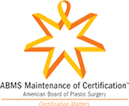Posted: August 17, 2010
Aug 8: Some background on Pingliang, (平涼) located in central China: the most famous landmark is Kongtong Mountain (崆峒山), the cradle of Taoism.
Pingliang is almost exactly in the middle of the map of China, right.
I had a chance to visit Kongtong Mountain, which is a short taxi ride from our accommodations in Pinliang. It is interesting to note that traffic regulations are quite different here. It appears that the lines in the road are merely “suggestions.” Cars do not hesitate to drive on the “wrong side” of the road, if it is convenient for the driver. This adds interest and excitement to the trip, like watching a national tournament of vehicular “chicken.”
The landscape is terraced for agriculture, and sandstone rock faces are perforated with thousands of man-made caves, used for centuries as dwellings, now mostly for storage – typically of grain and other agri-products grown here. The Chinese consider the area “desolate and dry,” but it feels humid to a Coloradoan. Things do grow here, but it is hardly lush, as the sandstone and conglomerate soil is not very fertile. This accounts for this being a poor province, since agriculture is the main industry here.
The road curves to the left and we are abruptly in a more verdant landscape bordering a remarkably green lake above which is the steeply rising 2200 meter Kongtong Mountain. The immediate impulse is to get to the top of this natural tower that dominates the Gansu plateau.
The sharply ascending cable car ride over the lake is accompanied by rapidly clicking camera shutters. I join in taking pictures, knowing these photos fail to capture the beauty and feelings I am experiencing today, but I hope the photographs can serve to remind me even a little about how it feels to be in this place.
Even before the cable car arrives at its station, we see many temples perched on the mountain’s tiers of rocky projections. I have a moment of recognition that I am actually in one of those exotic places I have seen in ancient works of Chinese art; I feel I recognize the dragon- and gargoyle-adorned, pointy-roofed temples at the edges of thousand-foot precipices from some movie or travelogue. Only now, I am actually here, they are real, and not just an exotic image or artist’s creative machination.
After a bit of walking over the rocky landscape among great centuries-old temples, I have broken away from the group distracted by the fortune-tellers, souvenir booths and beer garden of the Tourist Center. The thousand stairs that very steeply rise to the next peek beckon and intimidate, but the view through the trees to the temple looming above is irresistible. The irregular stone steps are very tall and dotted with pilgrims pausing to rest and scan the panorama. Intermittently, a small path directs me to ancient Tao alters like “Temple of the Clouds,” each on its own particular perch, with its unique view.
My senses are further filled by incense, intermittent prayer gongs, and the chanting of robed monks.
High up in “Heaven City,” I happen to meet up with one of our crew; Barry is a bright Anesthesiologist from Beijing. He is cheerful and physically very fit. He is surprised to see me at this remote altitude, smiles and asks, “Should we go to the top?” By now, “the top” seems illusory, unreachable, like a mirage; as soon as I think I have gotten there, I see another temple through the trees above. Of course and without hesitation, I answer, “Yes!”
Some stairs are cut into the mountain with a temple carved around them. The views, altitude, and climbing steep narrow rocky paths on precipices with drops measured in hundreds of meters can all be described as “breath-taking.” One of the most thrilling is the narrow cable-suspended, “Bridge to Heaven,” the only tenuously thin attachment traversing to an isolated, needle like tall spire rising many hundreds of meters from the valley and crowned with its own small temple.
Barry and I reach the very top of Kongtong. The top temple is heralded by an archway before which Barry immediately poses, instructing me to photograph him being certain to clearly include the three Chinese characters painted on the arch which frames the temple behind. I comply. Barry takes the camera to ascertain adequacy of my photo-documentation. Sure that we are standing at an ancient and sacred spot, paramount in significance to the lore and history of Taoism, I ask Barry what the sacred calligraphy means. He points to the words and interprets for me: “This is the top.”





